It’s no surprise every contemporary blogger vies for even the most unassuming spot on SERPs (free massive traffic).
According to Hubspot’s 2019 estimation, Google processes a staggering 5.6+ billion queries daily. That’s approximately 226.8 million every hour and over 63,000 searches a second.
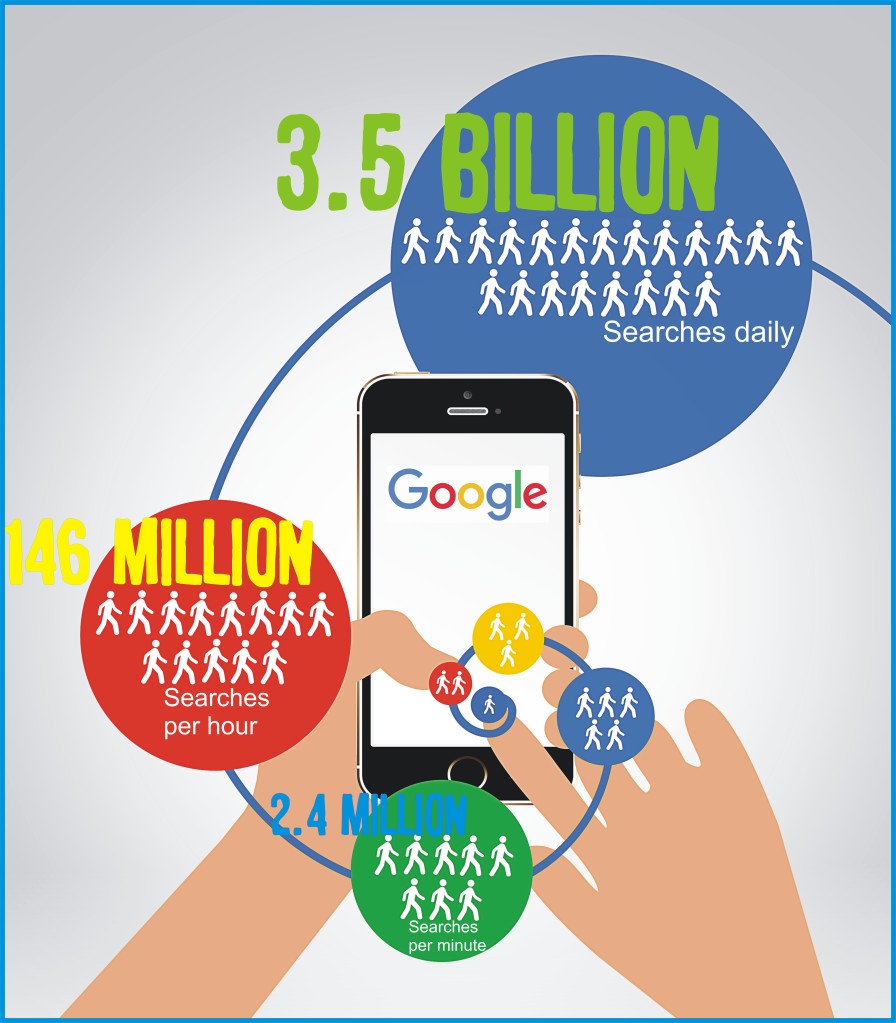
Even disregarding Bing or Duckduckgo, a traffic share as low as 0.0001% of this daily Google search query can dictate the success of nascent blogs.
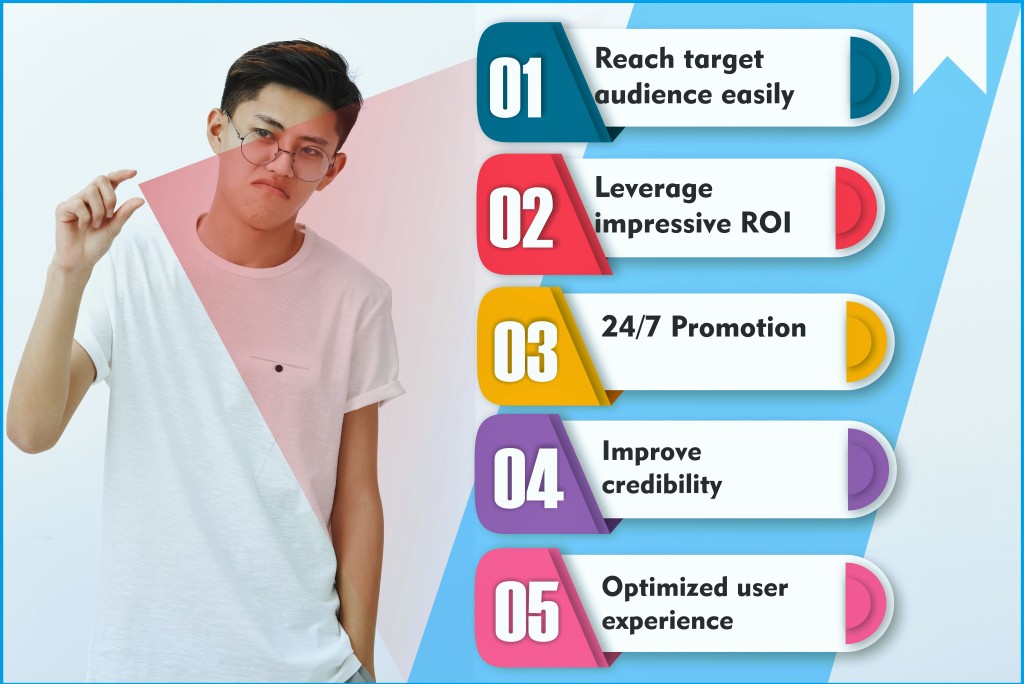
However, how easy or difficult is it for an article to rank over billions on SERPs? How can bloggers bolster the odds?
This concise, easy-to-understand guide aims to enlighten more about on-page SEO, its implementation, and its ultimate role in ensuring articles rank on search engines.

With a principal focus on blog posts, stick around; let’s dive into deeper details.
What is SEO?
In Neil Patel’s words, Search Engine Optimization (SEO) is the process of improving online content so that search engines prefer to show it as a top result for searches of a particular keyword.

Think of it as a job interview. From your dress code to your demeanor to your resume, you maximally give the best impression that you possess the right qualities for the job. SEO is no different!
You put in extra effort to inform search engines that your content has required details on a particular search term over others.

It essentially branches into two: on-page and off-page optimization.

On-page SEO, this article’s significant focus, is performed within the webpage and site in contrast to off-page SEO implemented from other websites.
Quick ways to optimize blog posts for SEO
Before you begin these steps, endeavor to do your keyword research upfront, as you’d be using them in strategic locations.
Hubspot Keyword Research Guide can come in handy for newbies.
The following are the most attention-demanded facets of on-page SEO:
- Titles
- Descriptions
- Content
- Linking
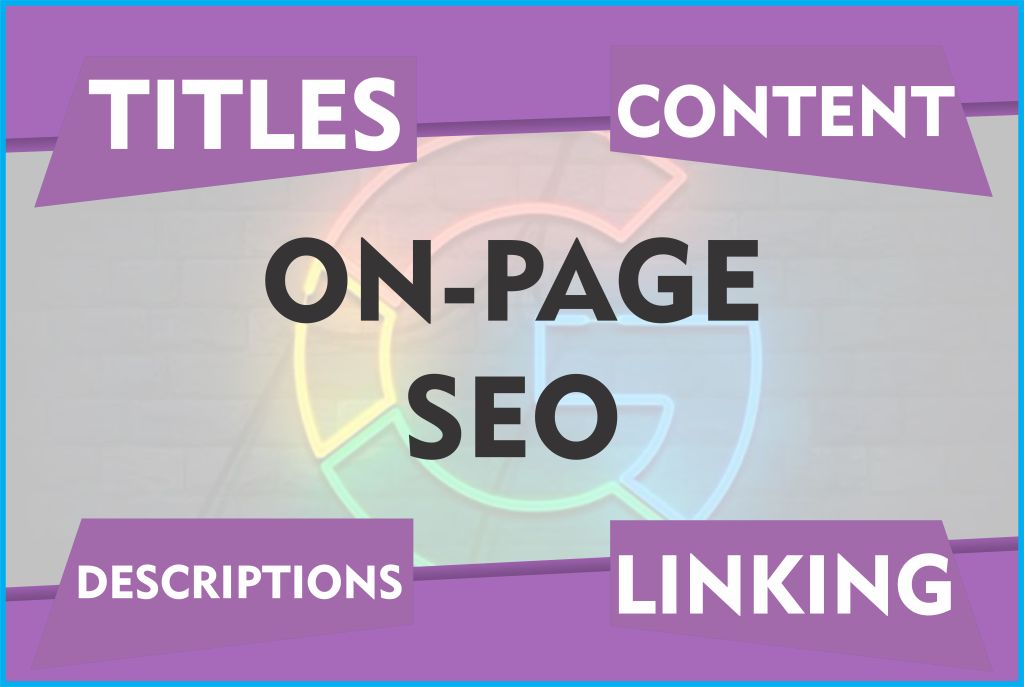
Let’s look into them as concisely as possible.
CONTENT & META DESCRIPTION
Content is always king, and writing to gain search engines’ recognition doesn’t disprove this.
An article that deserves the #1 spot on SERPs can’t be bland, confusing, or dissatisfy search intent, yet having all the answers isn’t always enough.
How does your content potentially satisfy Google? Are there any hard and fast rules you must obey?
In this section, I’ve encapsulated all the salient qualities of great SEO content and discussed meta descriptions that you shouldn’t forgo.
- Write unique & invaluable content: Like every piece of advice, your article should offer something different than what’s already out there. It should be novel, exclusive, yet comprehensive.

Although it might prove onerous because every little info seems already online, you could conduct further research, add that extra sample, or even renew outdated details to make it stand out.
Technical content could be eclectic, one can update news pieces, and reviews could have fresh, first-hand experiences.
Google always fancies unique content over plagiarised and duplicate ones.
- Use your keywords in the first 150 words: A prime reason posts rank above others in SERPs is that they satisfy their respective search intent, and how is that possible without keywords? It isn’t.
Moz defines keywords as “ideas and topics that define your content.” They are the most crucial asset in SEO.
As usually recommended, you’d always use them throughout your article, but prioritize them between the first 100-150 words.
For example, Medicine Health immediately mentioned “bad carbs” twice in their search engine optimized article.

Overall, they mentioned it five times throughout the content, three coming from the first 150 words.
It’s a minor detail, apparently, but with a significant impact on how Google will value your content.
- Use LSI (Latent Semantic Indexing) Keywords: LSI keywords are related terms search engines use to comprehend your content deeper.
For example, if you were writing an article about “Content Marketing,” some LSI keywords you’d need to include are:
- Strategy
- Tools
- Example
- SEO
- Optimization

On the other hand, if you published an article about “Carbs,” Google would scan your content for words like the following:
- Good
- Bad
- Food
- Refined
- Weight loss
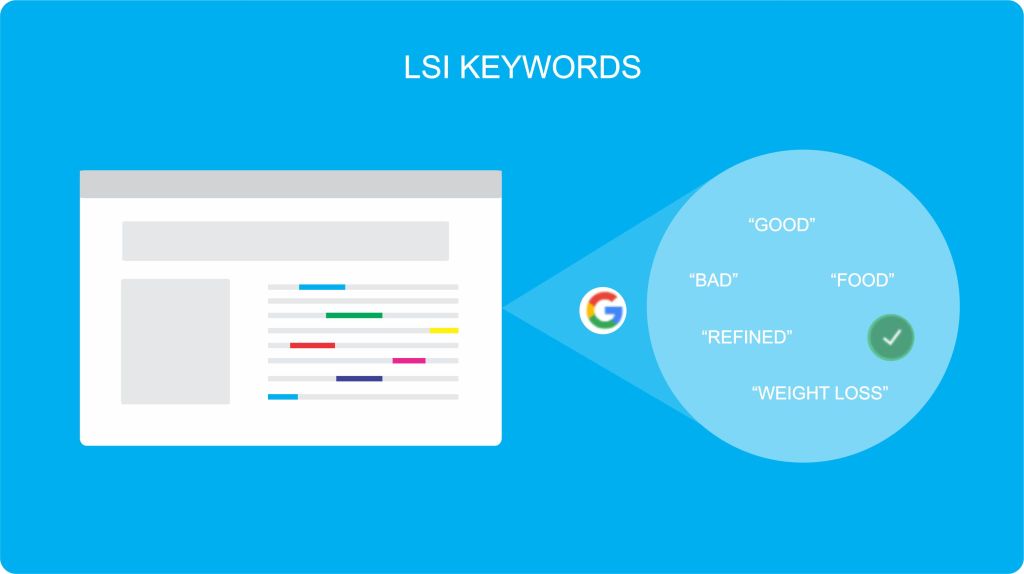
Unlike synonyms, they may be one or two more words longer than your primary keyword(s). But they are still somewhat easy to use.
If unsure of unique LSI keywords for your topic, Backlinko discussed various ways to discern them quickly.
- Stick to the advised keyword density: Gone are the days when stuffing keywords in your article could effortlessly get Google’s attention.

Today, there are severe contrary consequences.

As a rule of thumb, experts recommend a keyword per 200 words. That’s 0.5% of your total article length.
So if you were writing a 1500-word piece, try not to mention a particular keyword beyond seven to eight times.
For instance, Brian Dean’s mentioned “Youtube SEO,” in his article six times and ranks in Google’s first SERP.

Also, don’t forget to integrate them unobtrusively to avoid hurting your content’s reading flow.
- Always have keyword-rich meta descriptions: When asked if it was best to leave meta descriptions blank for Google to create them, here was Google Search Advocate John Mu‘s reply:
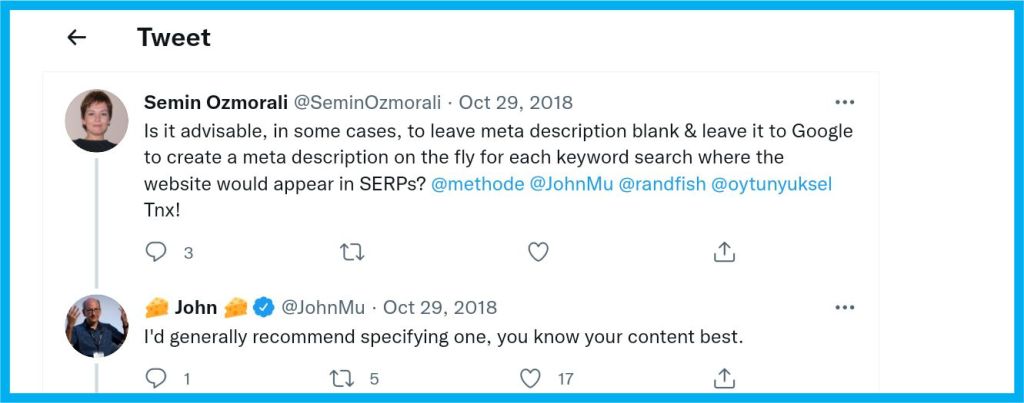
Google’s SEO Starter Guide also had these to say about meta descriptions:

Furthermore, Backlinko’s study revealed that pages with a meta description got roughly 6% more clicks than pages without one.

Thus, ensure all your articles have a unique meta description as you smartly incorporate your keywords. Google bolds these keywords every time (to prove their essence).
TITLES
Writers oblivious to SEO rarely have a hard time coming up with h1 & h2 title tags. However, according to experts, these tags play massive roles in ranking, making it worth the painstaking effort to optimize.
Here are the essential procedures:
- Sum up your post in the H1 tag: Although Google’s George Muller confirmed that it isn’t a ‘critical issue’ that blog posts forgo h1 tags, he admitted that they help Google understand the page’s structure.

If Google tries to understand your posts’ structure from its h1 tag, prioritizing your main keyword when crafting it is clever.
When it makes sense, place keyword(s) closer to the beginning, as Optinmonster believes that it impacts your ranking.
Medical News Today’s “keto diet” post is a quintessential example.
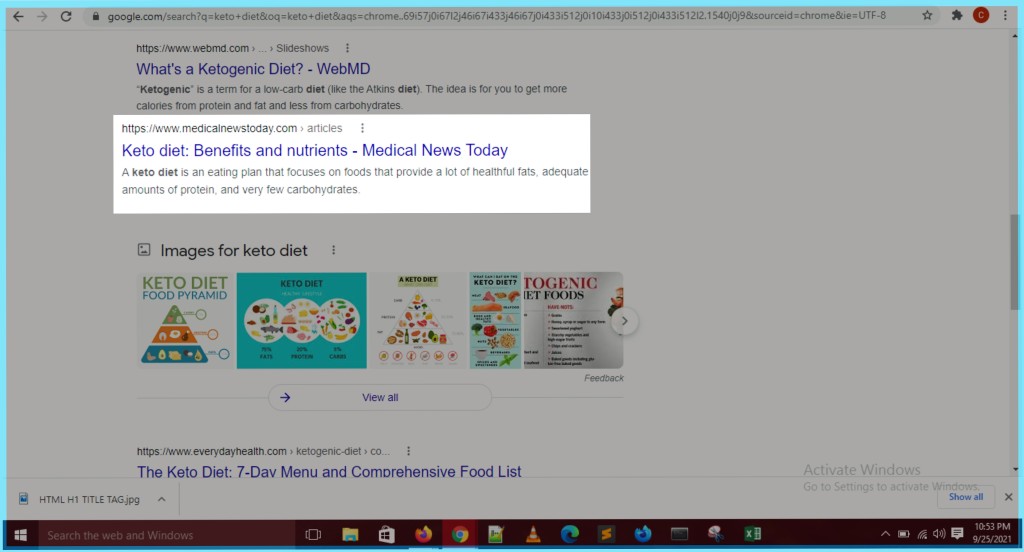
- Sum up your subheadings in H2 tags: If it isn’t critical for posts to have h1 tags, then h2 tags wouldn’t be a make-or-break ranking factor.
However, h2 tags improve your post’s readability, which is indirectly “better for your SEO.”
The same advice holds for h3, h4 titles, and so on.
- Optimize your titles for humans: Bloggers desperate for search engines’ attention usually neglect that humans are unwittingly the ultimate deciders of great, mediocre, or terrible titles.

Yes, you can impress search engines enough to secure SERP spots. However, if your headline (h1 title) isn’t enticing enough, your post will lose thousands of visitors.
If your h2 titles aren’t adequately descriptive, visitors may think your content doesn’t answer their questions. They will swiftly leave your website, hurting its bounce rate and inadvertently affecting the article’s search engine reputation.
Your titles should pass strong emotions, be of recommended length, and contain meaningful modifiers, to attract clicks and hold readers spellbound.
I highly recommend Coschedule free Headline Analyzer, which I use to ascertain the quality of my headlines for SEO.
Here is the result from analyzing the headline of my Medium post about carbs.

Like these creative sample headlines with highlighted keywords below, you can add the current year to the headline to spark interest, ask questions, or even make seemingly illogical statements.



LINKING
The last but certainly not least section will cover linking in SEO. I highlight essential linking tips bloggers should be well acquainted with to boost their success on search engines.

Let’s dive in without further ado:
- Internal linking: The ultimate aim of internal linking is to boost new articles’ search engine ‘juice’ from higher-authority posts on your website.

SEO experts have proven the massive impact of using your main keyword as anchor text.
It is a regular practice adepts seldom forget to implement.
To link yours, first, use Moz domain explorer to determine the highest-authority posts on your website.
For example, these are the top pages on Naija247blog:

Then judiciously edit them and include your hyperlinked keyword-rich anchor text linked to your new article.
Simple but effective.
- Use Outbound Links: Intending to clear doubts about the impact of outgoing links in ranking, Reboot Online experimented in 2016.
They created ten new websites with similar posts, linking five to high-authority websites, including Cambridge and Oxford. However, the remaining five didn’t have any outbound links.
It produced a lucid result as the five with quality outbound links outranked the other five under the same conditions.

They repeated the test in April 2020 and got a similar outcome.
- Optimize your URLs: Your URLs deserve the attention your title and headings get.

Unlike SEO-naive bloggers, don’t allow WordPress to create your URLs automatically.
It takes little or no effort to create an SEO-friendly one ensuring they are short, relevant, and contain a primary keyword or two.
Here are good examples you could learn from:



Why you should optimize your blog for SEO
As explained, the foremost reason for SEO is to profit from search engines’ unending traffic supply.
No matter how insightful blog posts can be, they are, no better than a second-grade ‘my puppy’ essay without getting them to the targeted readers.
About 70 million blog posts are published monthly on WordPress alone, claims Optinmonster. That’s roughly about 1,600 posts every minute and 27 every second.
While it can be effortless to create impeccable blog posts owing to your expertise, the odds aren’t in your favor to prevent them from obscurity.
Another exceptional attribute of SEO traffic over others is its high quality.

Unlike email newsletters sent to potentially interested or uninterested subscribers, most search engine traffic is targeted. Thanks to the essential keywords available, visitors are most likely keen on what your post will offer.
Search engines’ nearly unlimited span of traffic is another priceless benefit.
If adequately optimized and continually updated, SEO traffic to a blog post can flood in for weeks, months, years, and even decades. No other traffic source can boast of such.
Imagine casually writing a blog post that maintains relevance and attracts thousands of monthly visitors after five years. Cool right?
Continually optimizing your content over time due to the regular advancement of search engine algorithms makes it possible to relish the privilege.
Conclusion
Nowadays, possessing SEO skills has become more of a requirement than a perk for content writers. New blogs always seek to outrank incumbents on SERPs as incumbents strive to hold on.
Arming yourselves with basic on-page SEO knowledge, as elaborated earlier, could keep you on top of the game.
There are fundamental optimization strategies to take, from titles to content to linking while writing articles.
Google traffic’s quantity, quality, and span are unbeatable benefits every blog now aims for in SEO.
Did I forget something? I’d love to hear from you in the comment section.
Did I forget something? I’d love to hear from you in the comment section.
